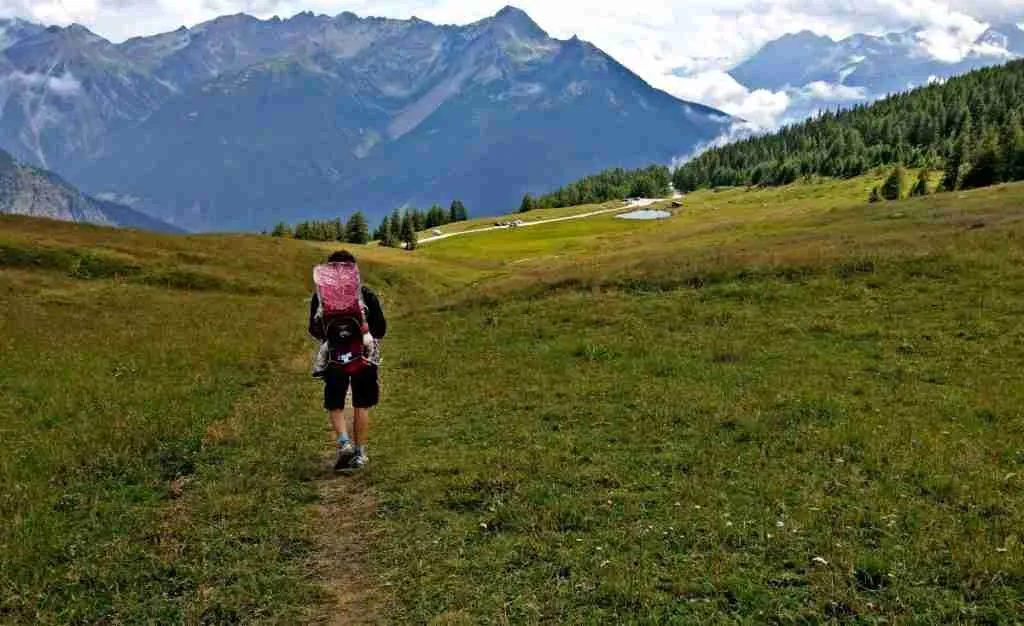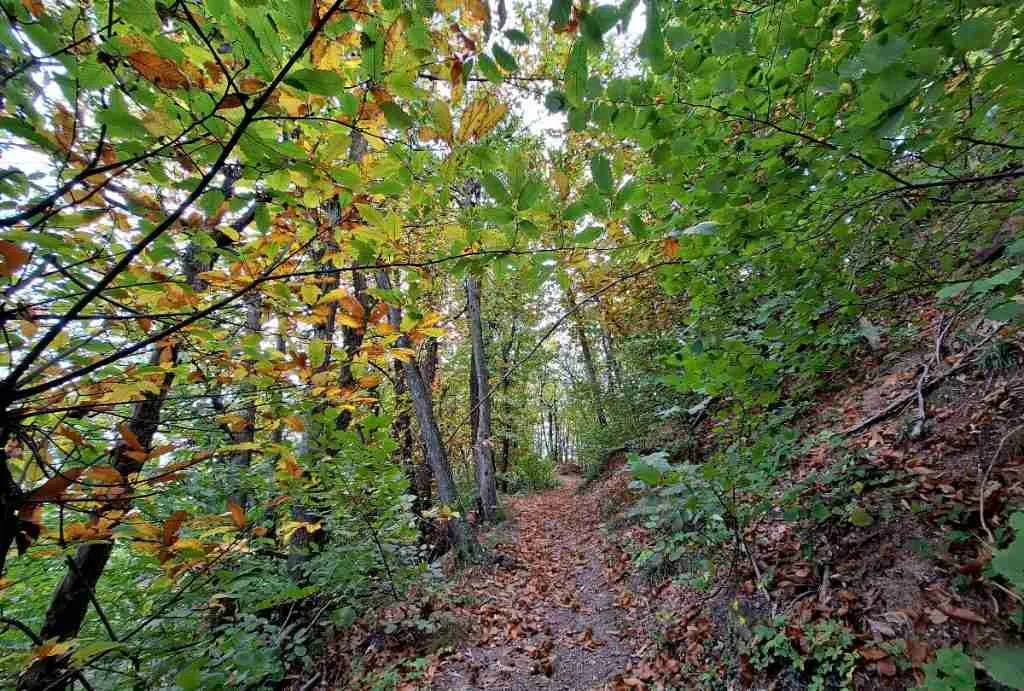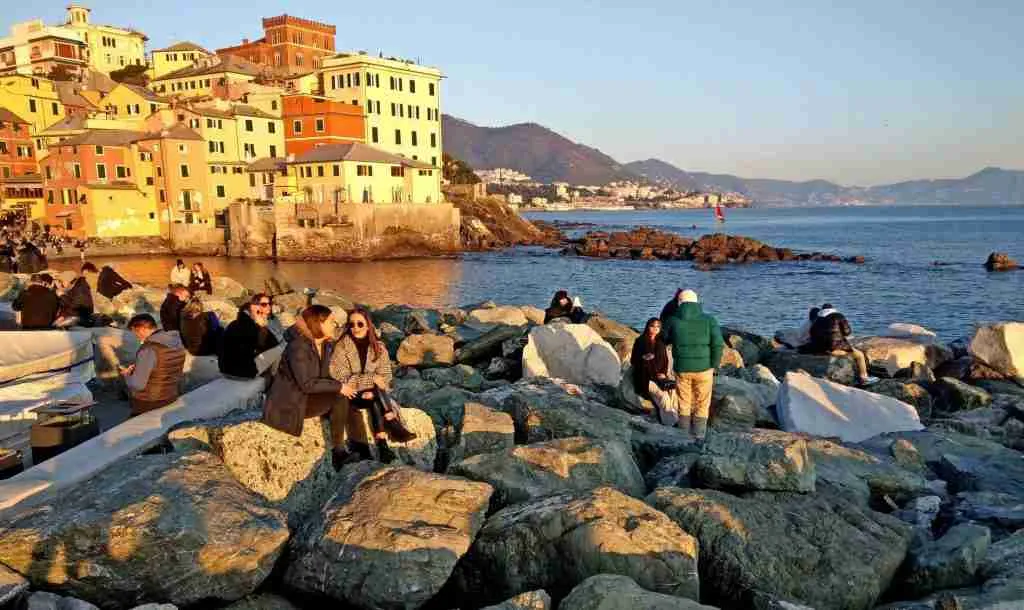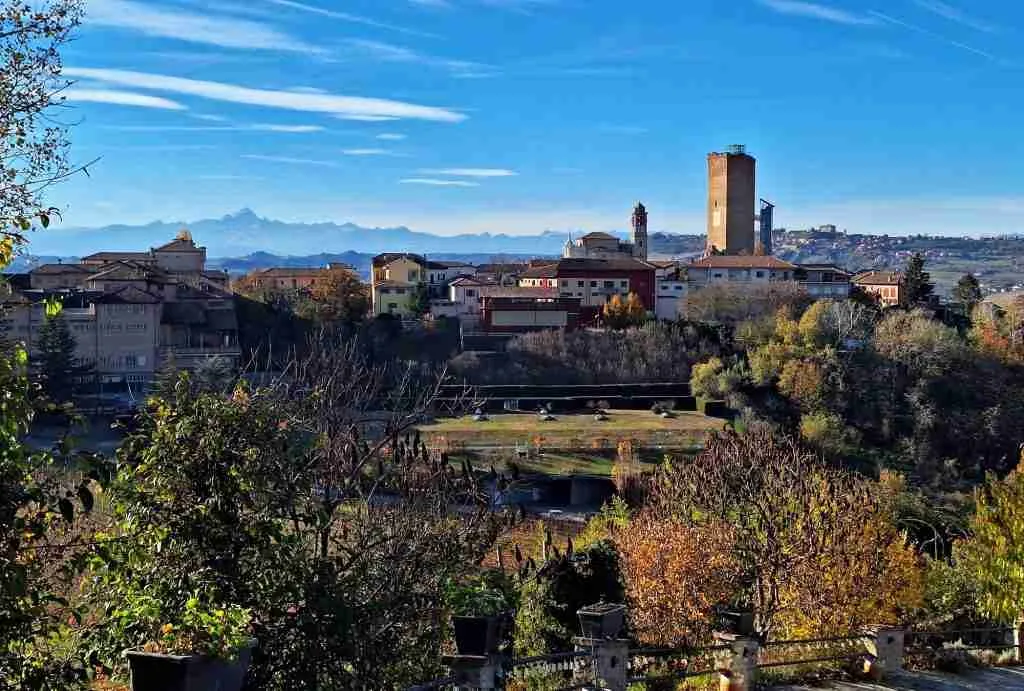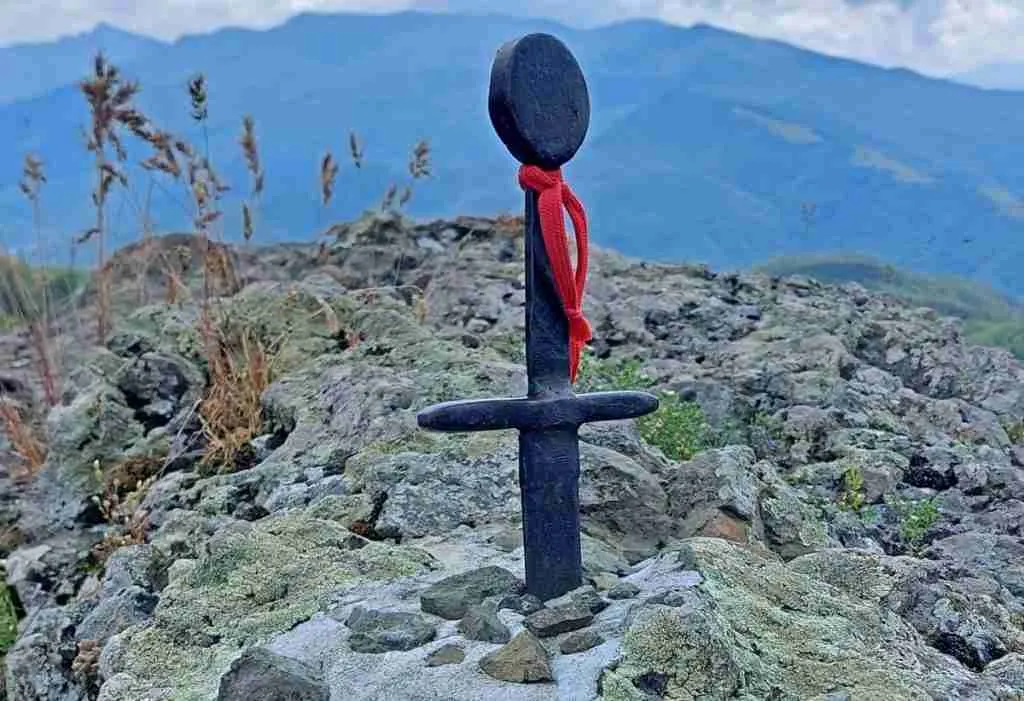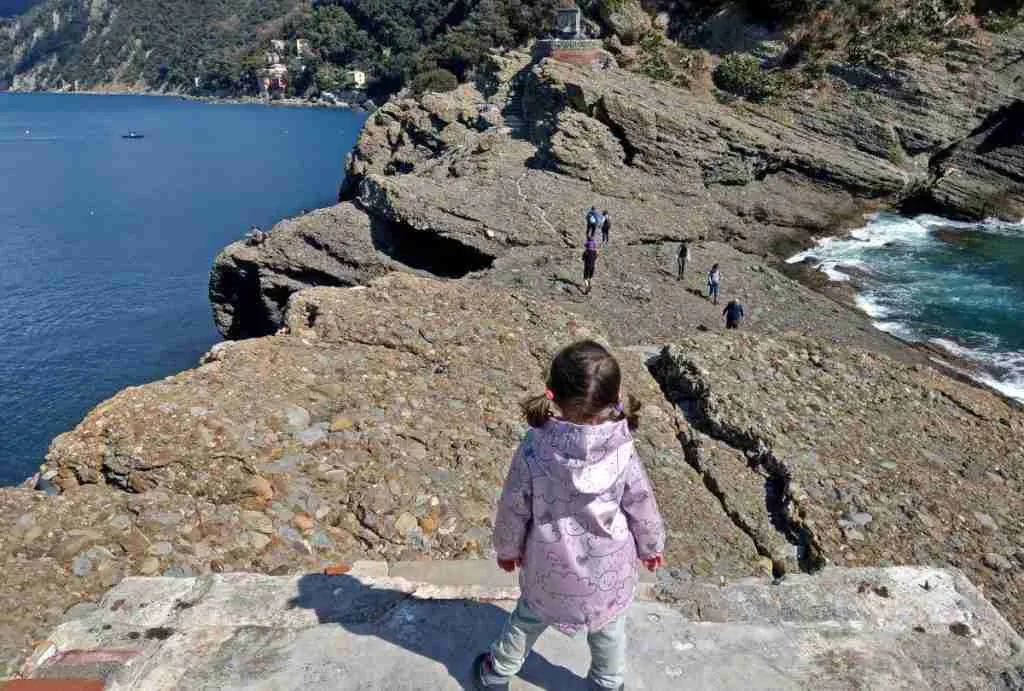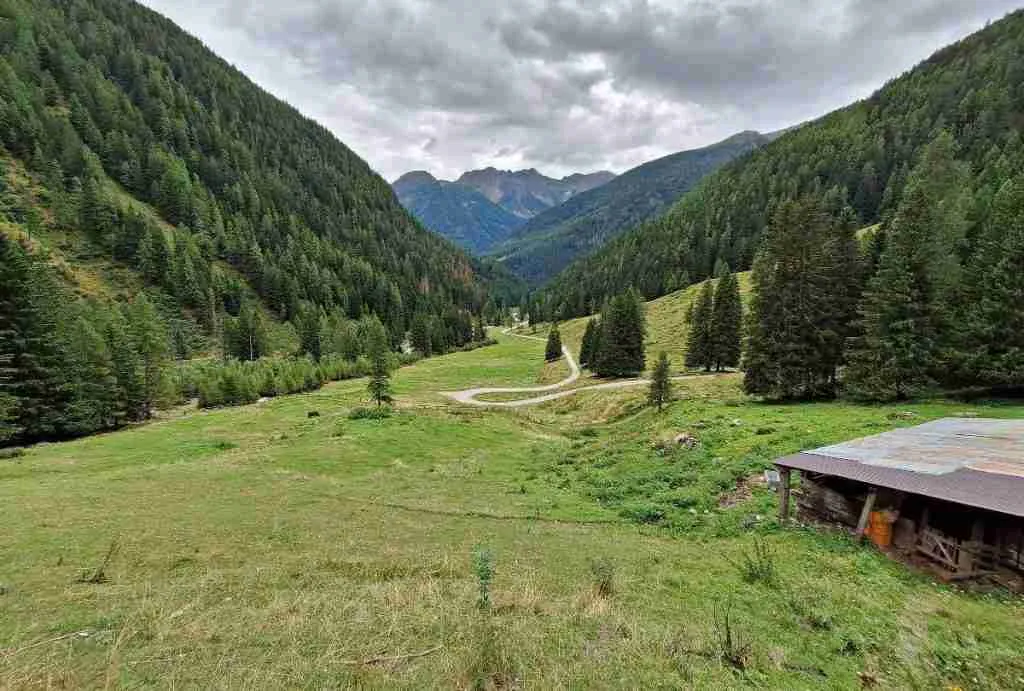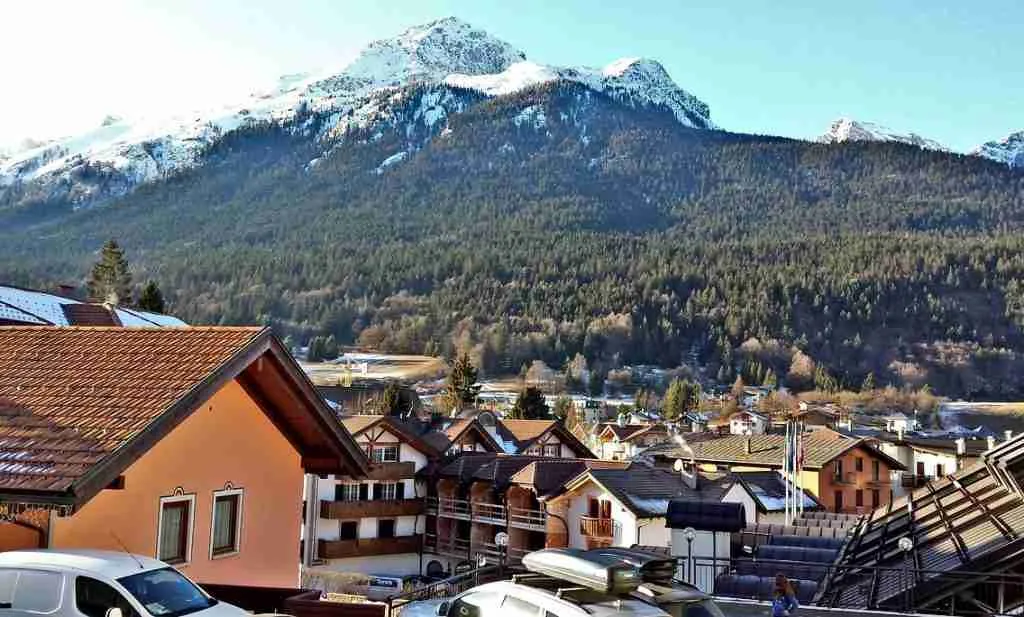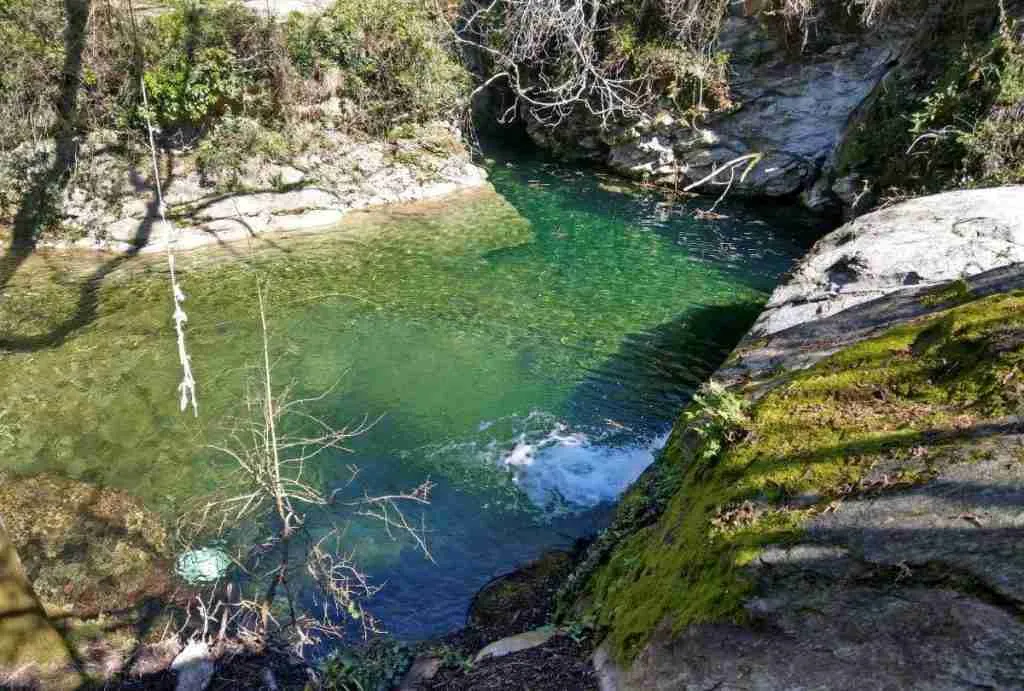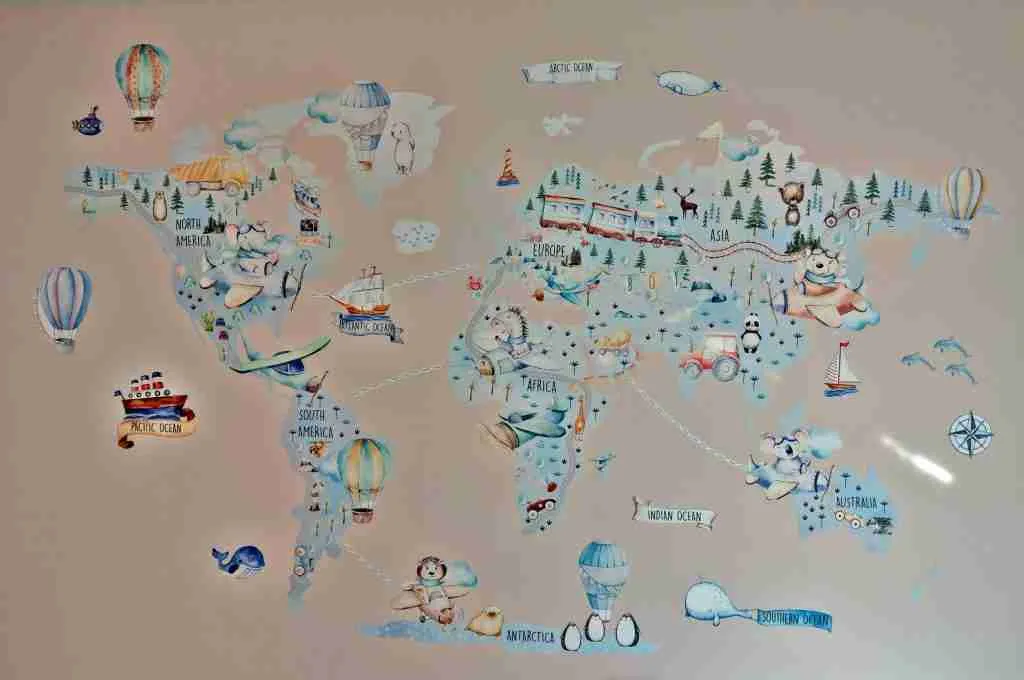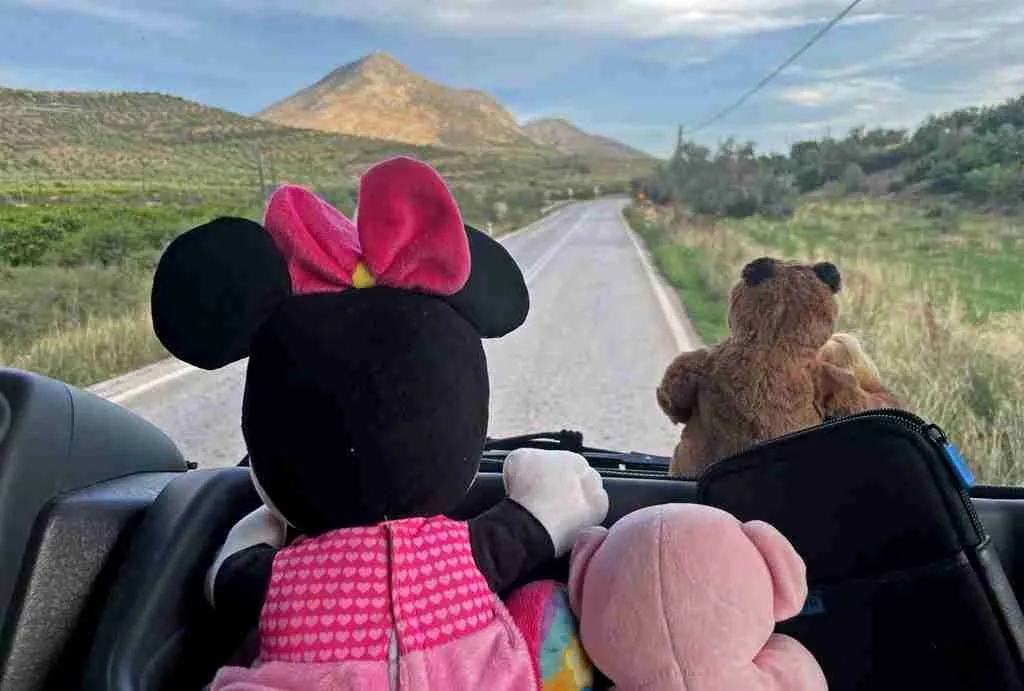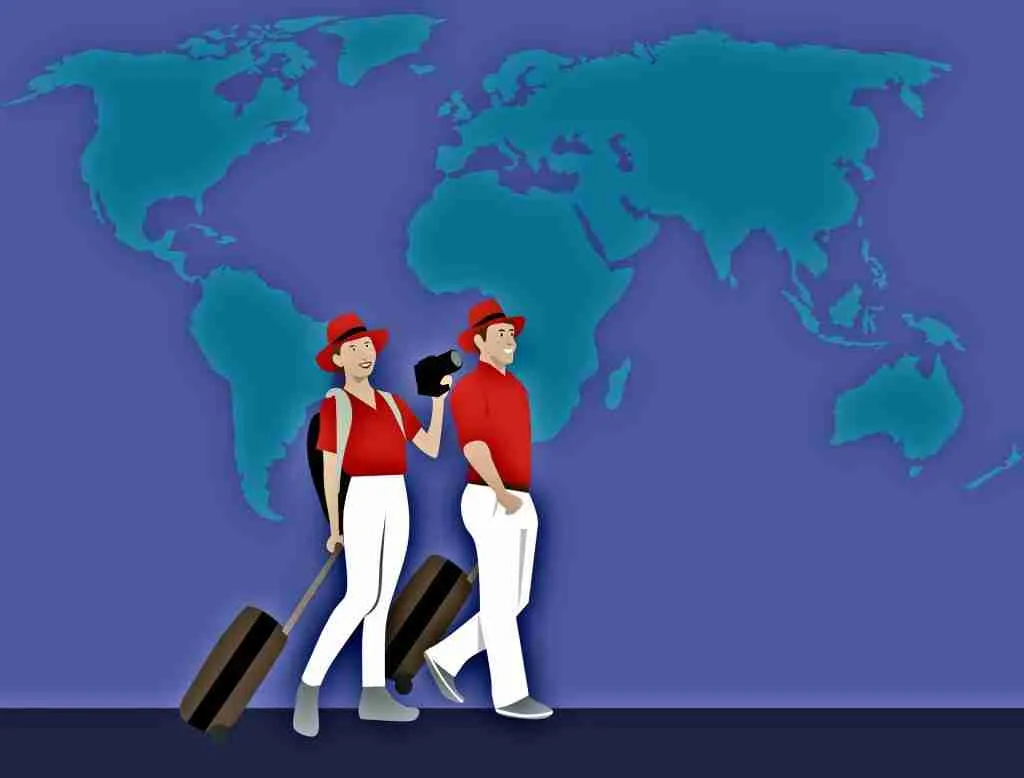It has been proven that colours have a very strong impact on our physical and psychological well-being, influencing behaviour and emotions.
And green, the colour of nature par excellence, has a relaxing, restful, anti-stress effect. This is probably why a day in the mountains is able to convey a sense of peace and serenity.
But is the mountain really for everyone? Can you go with a baby, for example?
Below you will find some information and the recommended altitudes according to the child’s age group , for an aware mountain walk.
Children in the mountains: altitude by age group

Mountain air is very good for children as it stimulates the appetite and promotes sleep.
When going to the mountains, however, one important factor must be taken into account: as you go up in altitude, the barometric pressure gradually decreases.
This means that you have less oxygen available.
To remedy this problem, especially in children who have a poor capacity to cope with a drop in oxygen, proper acclimatisation is necessary in order not to incur the famous altitude sickness.
Also called altitude sickness, mountain sickness consists of a set of ailments that occur when a subject is at high altitude (generally above 2,000 metres), due tohypoxia, i.e. lack of oxygen.
How can mountain sickness be prevented?
Mountain sickness can be prevented, as we have said, by correct acclimatisation, i.e. by gradually reaching a place at a much higher altitude than the starting point.
And so one can make a few stops whether one is going on foot or travelling by car, so as to limit the discomfort of altitude as much as possible, especially in infants.
Sudden changes in altitude, such as in a cable car or chairlift, should also be avoided, as this could trigger severe ear pain in predisposed children (with previous otitis or a cold in progress).
Children in the mountains: altitude by age group
Let us now look in detail at the recommended altitudes according to the child’s age group .
Babies and infants (0 to 2 years)
From birth to 2 years of age, you can go up to an altitude of 2000 metres. Ideally, to acclimatise properly, one should sleep at an altitude of 1500.
Children from 2 to 5 years of age
Children from 2 to 5 years of age can reach an altitude of 2500/3000 metres. Up to 2/3 years of age, it would be better to go back to sleeping at 2500 metres.
However, always pay attention to the child as at this age they are often not yet able to describe the symptoms.
Children 5 to 10 years old
The children from 5 to 10 years of age can safely reach an altitude of 3,000 metres and are able to report if they do not feel well.
Children over 10 years of age
For children over 10 years of age, there are no restrictions regarding altitude in the mountains.
How to recognise mountain sickness in a child
Normally, mountain sickness in a child arises a few hours after arrival at altitude (4 to 12 hours) and results in loss of appetite, sleep disturbances, nausea, and a lack of desire to play.
The child presents a general malaise that can be mistaken by parents for a trivial flu .
If these symptoms appear, it is best to consult the paediatrician and, if necessary, to start getting down to lower altitudes.
How to help infants cope with the change in altitude
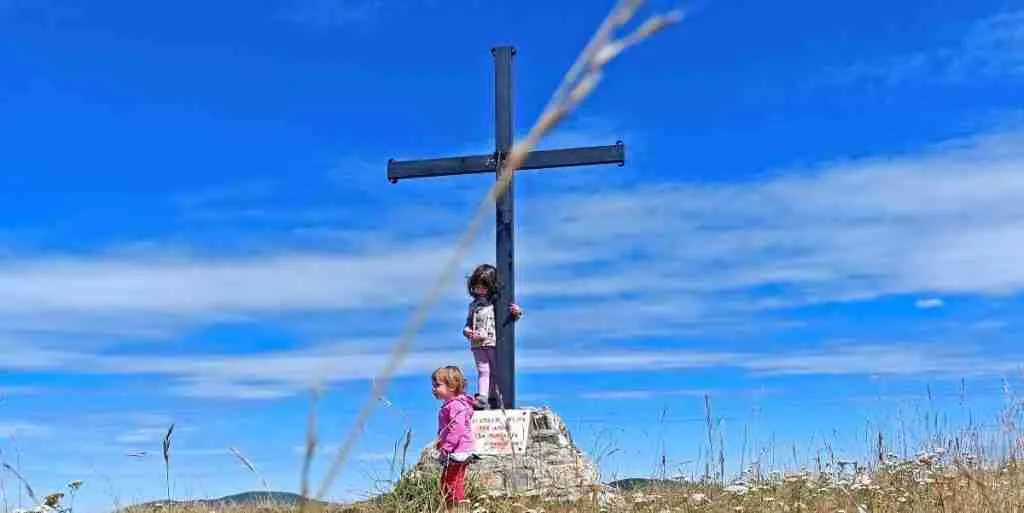
An adult can compensate for the change in pressure between the middle and outer ear by swallowing or yawning. In this way he can prevent trauma to the eardrum, triggered by a sudden change in altitude.
The infant, on the other hand, has no weapons to cope with this disturbance and signals discomfort to the ear, which can turn into actual pain, with crying.
So, how to help the infant cope with the change in altitude? In the same way as recommended for take-off and landing in a plane, i.e. give them a dummy or bottle (or attach them to the breast).
This will stimulate swallowing and compensate for the pressure on the ear.
Children in the mountains: useful information
it is important to remember that if the child is carried in a backpack, he will be much more sensitive to low temperatures than a child who can warm himself by walking, due to the static position. It is therefore important to cover him properly.
high-protection sun cream (50 ) should be applied every 2-3 hours. Ideally, the child’s head and face should be covered with a hat with a visor. If the child is a little older, it would be a good idea to have him or her wear a good pair of sunglasses.
in the mountains, the climate is drier and the baby should be hydrated frequently by drinking some water (if breastfed, this is not necessary).
If you have any doubts or if you have a history of illness, always consult your doctor or paediatrician.
Sources:
Paediatrician Dr Alberto Ferrando
AA.VV., Children and the mountains, “cai.it”, February 2021.
Continue reading:


